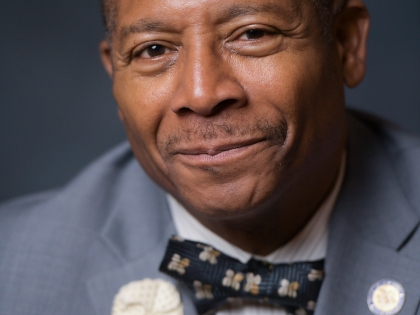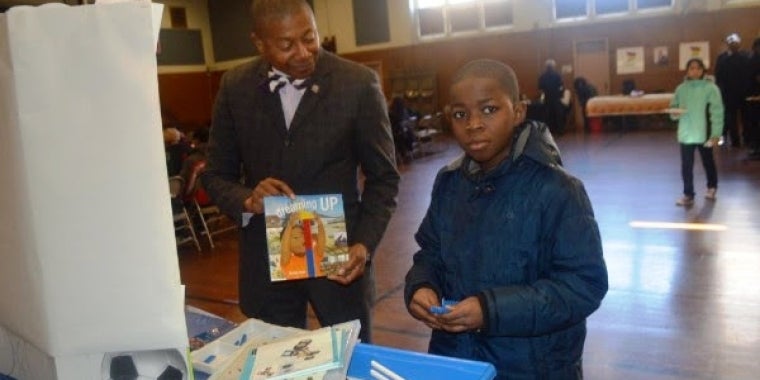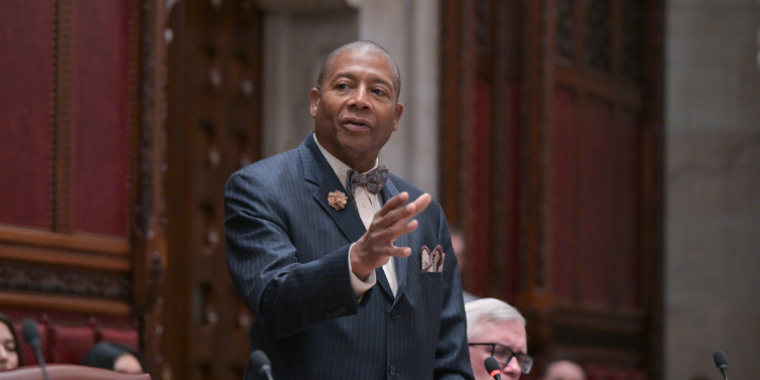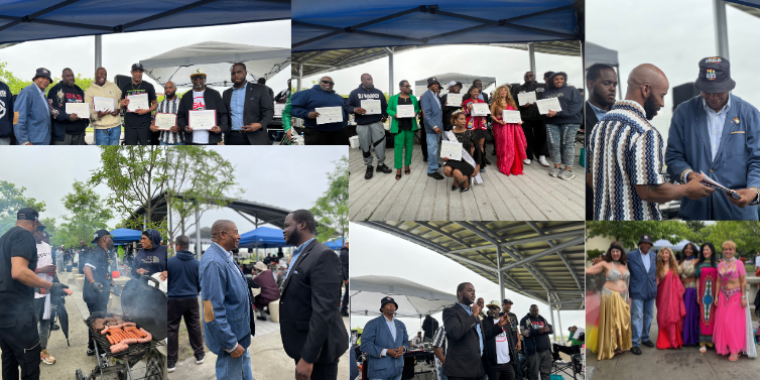
STEAM Opportunities Presented at Sanders' Workshop
February 4, 2017

State Senator James Sanders Jr. (D-Rochdale Village, Far Rockaway), held a STEAM Workshop Saturday at St. Clare Catholic Academy in Rosedale where dozens of students and parents from across the district learned about the importance of exploring career opportunities in Science, Technology, Engineering, Arts and Mathematics – all fields that primarily generate high-paying, in-demand positions.
“The reason we are here is that we realize the future is now,” Sanders said. “Anybody who is talking about preparing for the future has already missed it. We have to do everything possible to get ourselves into the 21st Century, and we are late. We have to push harder. Our young scholars deserve every opportunity that there is.”
Mariann Cantanzaro, a computer science instructor at St. Clare Catholic Academy, spoke about the basic tenets of teaching STEAM to young students. She said it’s all about “making a mess, trial and error, and getting children to think.” She spoke about some of the STEAM-related projects she has conducted with her students using inexpensive, easy-to-find items, and encouraged parents to mimic such activities at home with their children.
For example, one project used the premise of the children’s story – “The Three Little Pigs.” Students were given 6 index cards and a 3-inch piece of tape. They were asked to construct a house that could not be blown down by the “big, bad wolf,” a role played by Cantanzaro. She also suggested having children experiment with making paper airplanes, to see which design could fly furthest, or testing the ability of an egg to stand varying amounts of weight before cracking, or creating paper boats with action figures as passengers to assess buoyancy.
“Legos are great STEAM building tools,” Cantanzaro also added. “See who can build the tallest tower. It could be a competition between children and parents.”
Samantha Kendrick, a structural engineer, and presenter at the event, focused on how STEAM fields like hers, which involve the construction of buildings, bridges, roller coasters and various other things, often lack female employees and people of color, but she stressed that those statistics should not act as a deterrent.
“We cannot let the lack of people of color in these fields infiltrate how we feel about ourselves,” Kendrick said. “Whether we want to draw comic books or become astronauts, it’s so important to remember that – Yes, we can – and continue to live with that idea of black excellence.”
Kendrick also quoted Henry Ford, who said, “Whether you think you can, or you think you can’t – you’re right.” In addition, she used the film “Hidden Figures,” as an example of encouragement. It is the story of female African-American mathematicians at NASA including one who calculated flight trajectories for Project Mercury and other missions.
In the area of Mathematics, Terry-Ann Burell, executive director at J.P. Morgan, spoke about the relationship between Wall Street and Main Street, what it means to be a publicly traded company on the stock exchange and the role of investment bankers, one who provides financial and strategic advice to clients regarding the value of their companies and how much they should be sold for.
Also touting the benefits of STEAM employment was Danillo Archbold, CEO and co-founder of Zion STEM Academy. For example, the number one STEM job is statistician, Archbold said, with a median income of $80,110 and an unemployment rate of less than 0.008. He noted that the U.S. ranks 36th in the world when it comes to math and science. More alarming, he said, less than 3 percent of African-Americans, both male and female, are in STEM-related fields. He also said that more than 73 percent of scientists and engineers are Caucasian.
“We are way behind,” Archbold said. “The children are our future and their future in our hands.”
Share this Article or Press Release
Newsroom
Go to Newsroom


